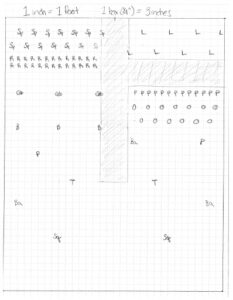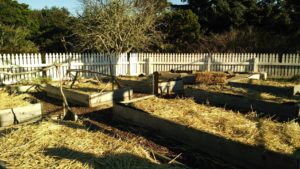 Spring is in the air, and it is time to start considering planning your gardens. Planning helps you make the most of your garden’s available space and sunlight. Knowing what, when, and where to plant can often be overwhelming. Taking time to make a plan will help you be successful in your endeavors. This article will cover the essentials of creating a garden plan by going through a series of questions to help you lay it all out.
Spring is in the air, and it is time to start considering planning your gardens. Planning helps you make the most of your garden’s available space and sunlight. Knowing what, when, and where to plant can often be overwhelming. Taking time to make a plan will help you be successful in your endeavors. This article will cover the essentials of creating a garden plan by going through a series of questions to help you lay it all out.
Question 1: What do you want to grow in your garden?
 When you are deciding what vegetables to grow in your garden, several factors should be considered. Such as the amount of light, heat, water, and soil conditions that you have. Also consider the types of fruits and vegetables that you enjoy eating or new ones that you might want to try. Grow what you eat and eat what you grow. For example, if you enjoy eating a lot of salads, consider growing lettuce, tomatoes, mustard, and collards. Do you love salsa? Perhaps you’d like to consider growing tomatoes, cilantro, onions, and peppers.
When you are deciding what vegetables to grow in your garden, several factors should be considered. Such as the amount of light, heat, water, and soil conditions that you have. Also consider the types of fruits and vegetables that you enjoy eating or new ones that you might want to try. Grow what you eat and eat what you grow. For example, if you enjoy eating a lot of salads, consider growing lettuce, tomatoes, mustard, and collards. Do you love salsa? Perhaps you’d like to consider growing tomatoes, cilantro, onions, and peppers.
Question 2: How much time do you have to work in the garden?
If your time is limited, think about growing vegetables and herbs that don’t require much upkeep. Some examples include radish, lettuce, green beans, cucumber, and most peppers. If you have lots of time to spend, try growing some of those vegetable species that take more effort. Some examples include cauliflower, broccoli, celery, and melons.
Question 3: How much space and sunlight does your garden have?
 Think about how much space, sunlight and length of the growing season for your garden zone. When looking at seed packets, select for your garden’s hardiness zone using USDA’s plant hardiness zone map. If it is in a shaded area, you will want to grow shade tolerant vegetables and herbs like arugula, spinach, beets, carrots, potatoes, etc. If you have full sun (6 hours or more of sunlight that isn’t filtered through the trees) you will want to select heat tolerant plants like peppers, tomatoes, strawberries, corn, etc. Colorado Master Gardeners has a sample planting guide for raised garden beds.
Think about how much space, sunlight and length of the growing season for your garden zone. When looking at seed packets, select for your garden’s hardiness zone using USDA’s plant hardiness zone map. If it is in a shaded area, you will want to grow shade tolerant vegetables and herbs like arugula, spinach, beets, carrots, potatoes, etc. If you have full sun (6 hours or more of sunlight that isn’t filtered through the trees) you will want to select heat tolerant plants like peppers, tomatoes, strawberries, corn, etc. Colorado Master Gardeners has a sample planting guide for raised garden beds.
One of the most important things to consider when planning your garden is space. The easy way to determine spacing between different plants is to use the average of their mature sizes. As an example, when planting a 5-foot-wide tomato plant next to a cucumber plant that grows up to 3 feet wide, space the plants 4 feet apart. Remember to measure from the center of one plant to the next. You want to avoid planting right on top of each other, because it might impact the yield and vigor of the plants. Colorado Master Gardeners has a good guide for determining spacing between different plants.


Well I must say that this will definitely help me with planning, set up, and execution of a wonderful garden this year. I have struggled for years with type, spacing, and location of my vegetable garden.
Thank You for the info.
Jim